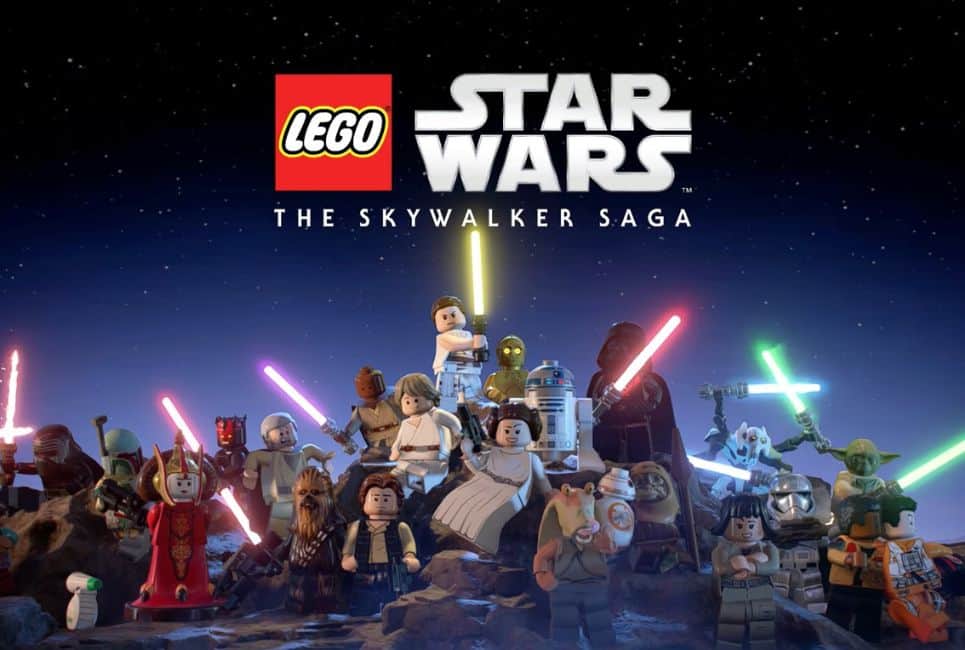- Obi-Wan Kenobi Series Synopsis: The Perfect Bridge - August 13, 2023
- Tales of the Jedi Synopsis - August 2, 2023
- Best The Mandalorian Episodes Ranked: This is the Way - August 2, 2023
LEGO Star Wars is one of the most successful LEGO video games of all time. It all started in 2005 with LEGO Star Wars: The Video Game, focusing on the first three episodes. The next year, 2006, saw the release of The Original Trilogy. After that, we had The Complete Saga – an amalgamation of The Video Game and The Original Trilogy. It came with bonus content and levels and a wonderful selection of collectibles to find.
Since then, LEGO Star Wars has taken a break. Other LEGO games came and went, like LEGO Indiana Jones, LEGO Harry Potter, LEGO Lord of the Rings, and LEGO Marvel. Sure, LEGO Star Wars: The Clone Wars was released in there too, but I choose not to remember that one. It wasn’t so good.
Now, we’ve finally been given the much-anticipated fifth instalment in the LEGO Star Wars. In this guide to LEGO Star Wars: The Skywalker Saga, I’ll walk you through the gameplay, the content, and what you can expect from this comprehensive Star Wars experience.
Throughout LEGO Star Wars: The Skywalker Saga, you’ll go through each of the now-nine Star Wars episodes, with completely revamped levels and highly customizable minifigures. Of course, you’ll know the story of Star Wars if you’re on this website, so I won’t run through that in any kind of detail. But whether you’re into the iconic Original Trilogy, the unexpected Prequels, or the highly-contentious Sequels, I promise there’s something for you.
Successor to The Complete Saga
I maintain that The Complete Saga, released in 2007, was and is the best LEGO Star Wars game that’s ever been made. There aren’t that many to pick from, I suppose. The Skywalker Saga comes oh-so-near to beating it, in my opinion. It brings a wealth of new features and exciting developments.
The third-person gameplay, which I’ll come to in the next section, is faithful to its preceding LEGO games in terms of movement and animation. As you’d expect, the resolution is significantly higher quality, with far more concentration on facial expressions and flexibility than the old games had.
LEGO Star Wars: The Skywalker Saga doesn’t quite capture the fundamental spirit of a LEGO game, for me. There’s plenty going on and lots to explore and build, sure, but the menus are too complicated and the puzzles are too simple. I know it’s a game for kids – that’s something I easily forget! But I wish there was just a little bit more dependence on The Complete Saga when it comes to that kind of thing.
Overall, it’s brilliant, and probably everything someone would expect if a LEGO game came out today as the first one ever. The fact that it’s built on such a successful series, though, and one that was so much a part of my childhood, makes me resist it ever so slightly.
You’ll spend most of your time running around. That’s the inevitable consequence of an open-world game. Again, I’ll talk about this some more below. Collecting things is great and a really satisfying thing to put in any game (but especially a LEGO one). The thing is, when it takes so long that you start getting bored, something’s not quite right. I’d recommend playing with someone else. That way, if you get fed up of running round chasing things, you can always start shooting each other.
New Third-Person Mechanics
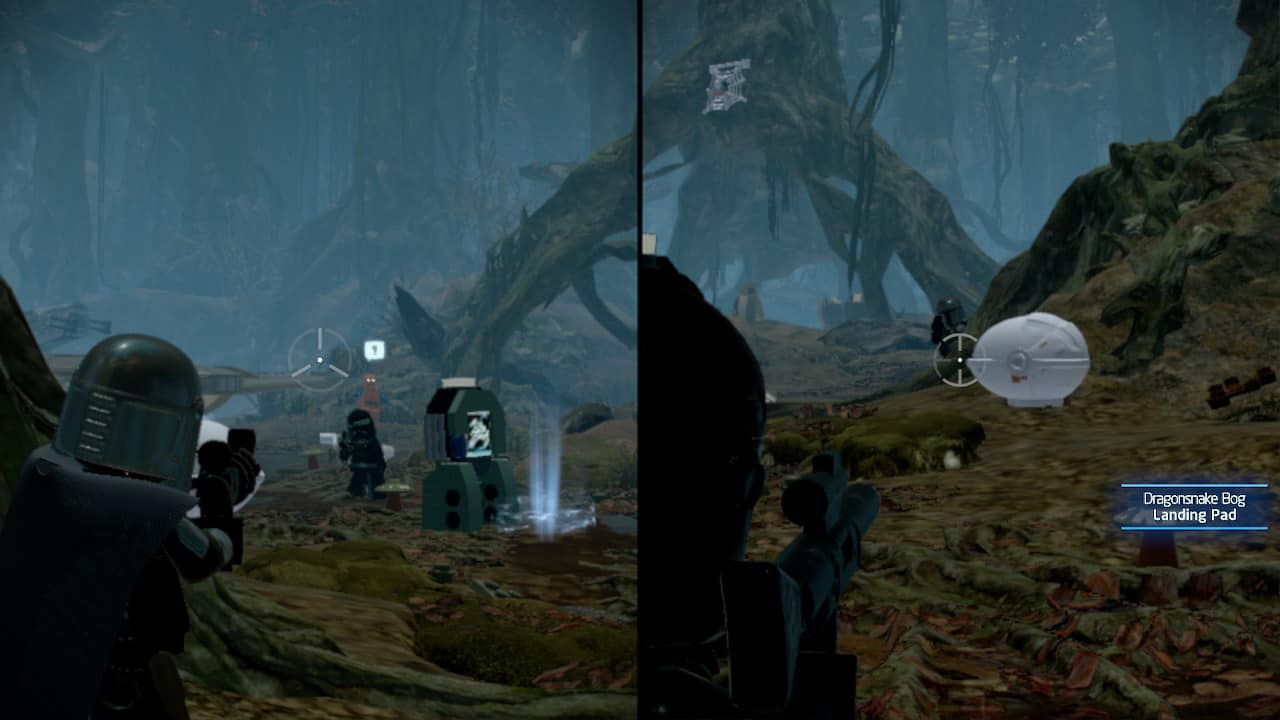
The biggest change from previous LEGO games is the new third-person mechanics. Where older LEGO games were little more than 3D platformers, The Skywalker Saga takes inspiration from almost every other modern game.
The LEGO-style movement and animations remain consistent, loyal to the brand and series. You still move around and jump or double-jump in the same ways, with the big explode-y slam attack and careful blaster deflection still playing their parts.
However, third-person in a LEGO game is taking me a while to get used to. It’s very advanced and all-round very impressive, but the perspective camera is quite sticky. It doesn’t matter too much when you’re playing as a melee character, but when you need to take an accurate shot at a moving target (your friend, when you’re bored), it’s very difficult to aim with any precision.
I might be a bit of a Luddite, but I feel the third-person partly takes away from the much-loved simplicity of a LEGO game. There are other components to this, too (most notably, the vastly complicated selection menus). That said, you’ll quickly get used to it and probably won’t notice it before long. Just remember to leave aim-assist on. We found that some levels (particularly ship-based ones) are nigh-on impossible without it.
Open-World
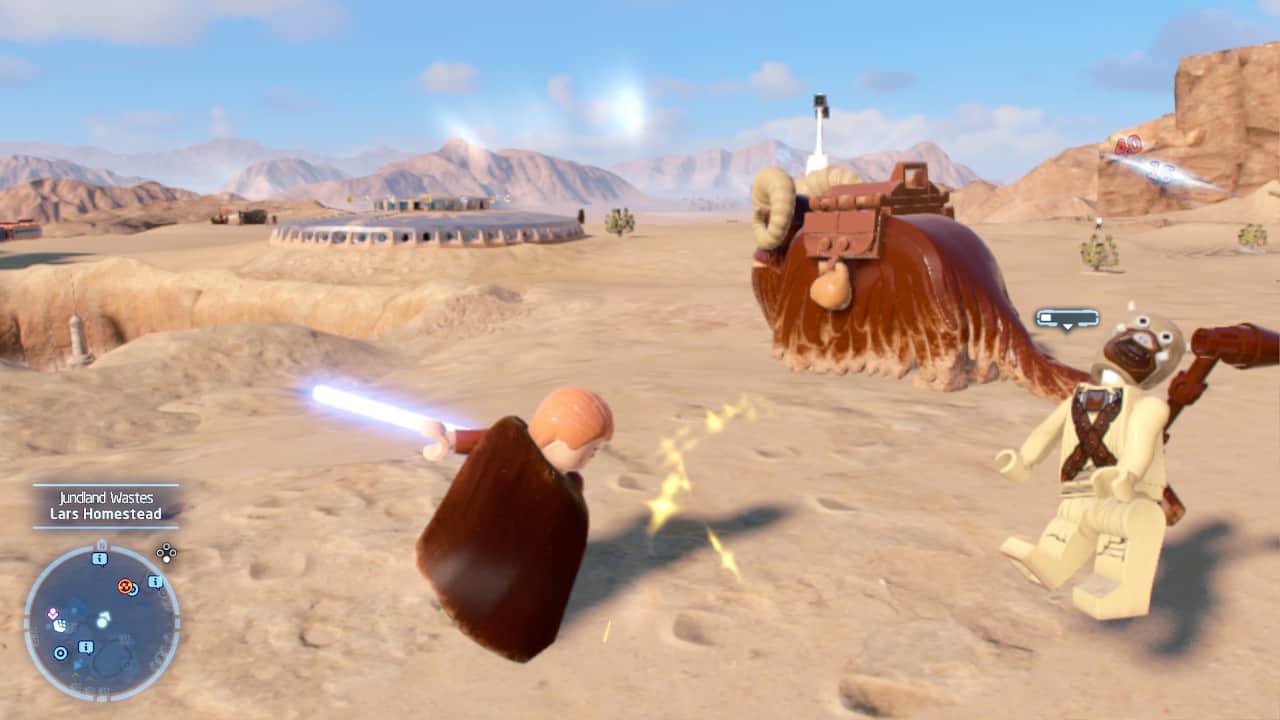
LEGO Star Wars: The Skywalker Saga is an open-world game. It’s huge, actually, with 24 different planets and story levels spanning them all. Of course, this is a stark contrast to The Complete Saga and the other previous iterations. They all had a free-roam area (that functioned as the menu, allowing you to access individual levels through door portals) but were far from “open world”.
LEGO Star Wars: The Skywalker Saga trades the traditional central hub area for the open-world concept. It’s very well engineered and adds more exploration vibes compared to its predecessors. There are lots of collectibles to find in the open-world, for example, rather than the vast majority being located in the levels themselves. It’s interesting scanning around the various locations as you try to find and complete your collections.
Again, I feel it’s a just a bit too much. Don’t get me wrong – it’s very well designed, programmed and constructed. There are lots of perks. As a game, it’s a brilliant. But as a LEGO game, it’s just a bit too complex. Once again, you’ll very quickly get used to the new format, and kids who’ve never played the originals will love it. I have to say, though, I miss the old days a little bit.
Oh, and also, the map feels a little strange. I can’t quite pinpoint what’s off about it, but I always struggle to get my bearings compared to most video games. You’ll get used to it eventually, but it’s worth being aware of.
Menu
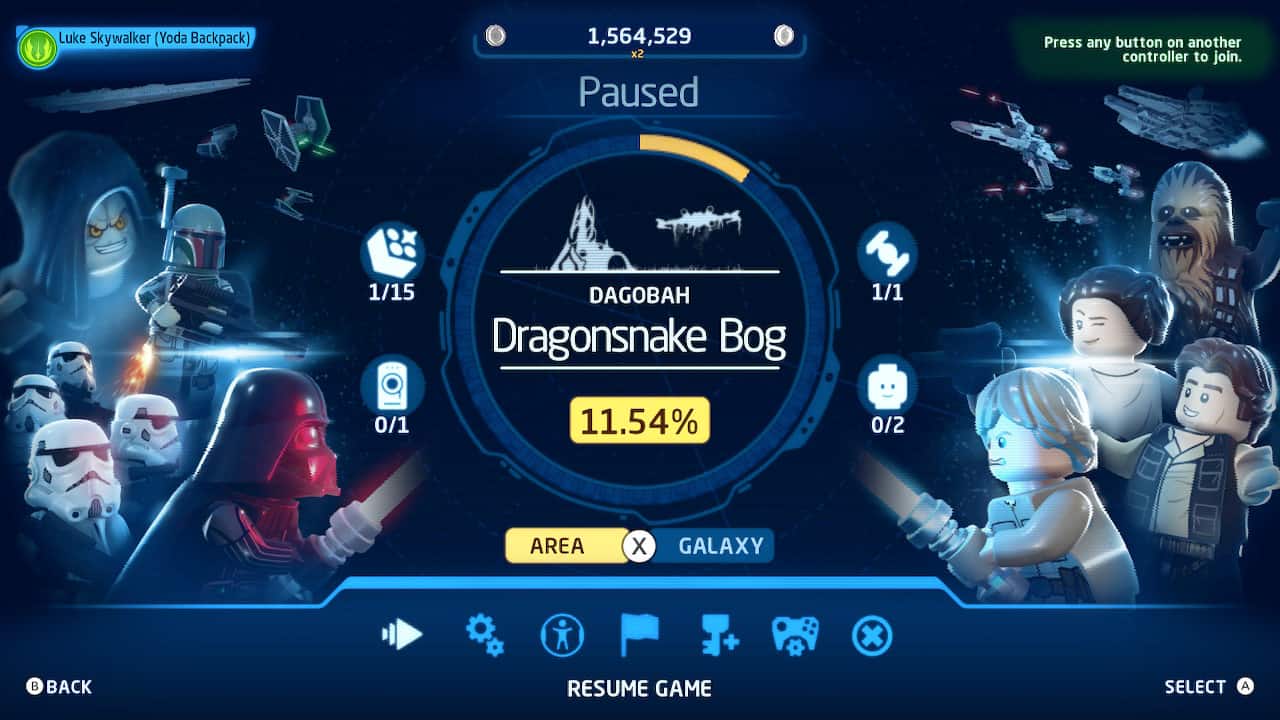
In the LEGO Skywalker Saga Menu, you’ll find the following sections. It’ll take too long to go through them all in minute detail, but I’ve picked a few of the most interesting things you need to know.
- Galaxy Map (24 Planets to visit)
- Characters (all the minifigures you could possibly wish for)
- Ships
- Upgrades
- Missions
- Episodes
- Extras
As you start to play, you’ll discover many more features, characters, locations, etc. Here are some of my top picks, though.
Notable Planets
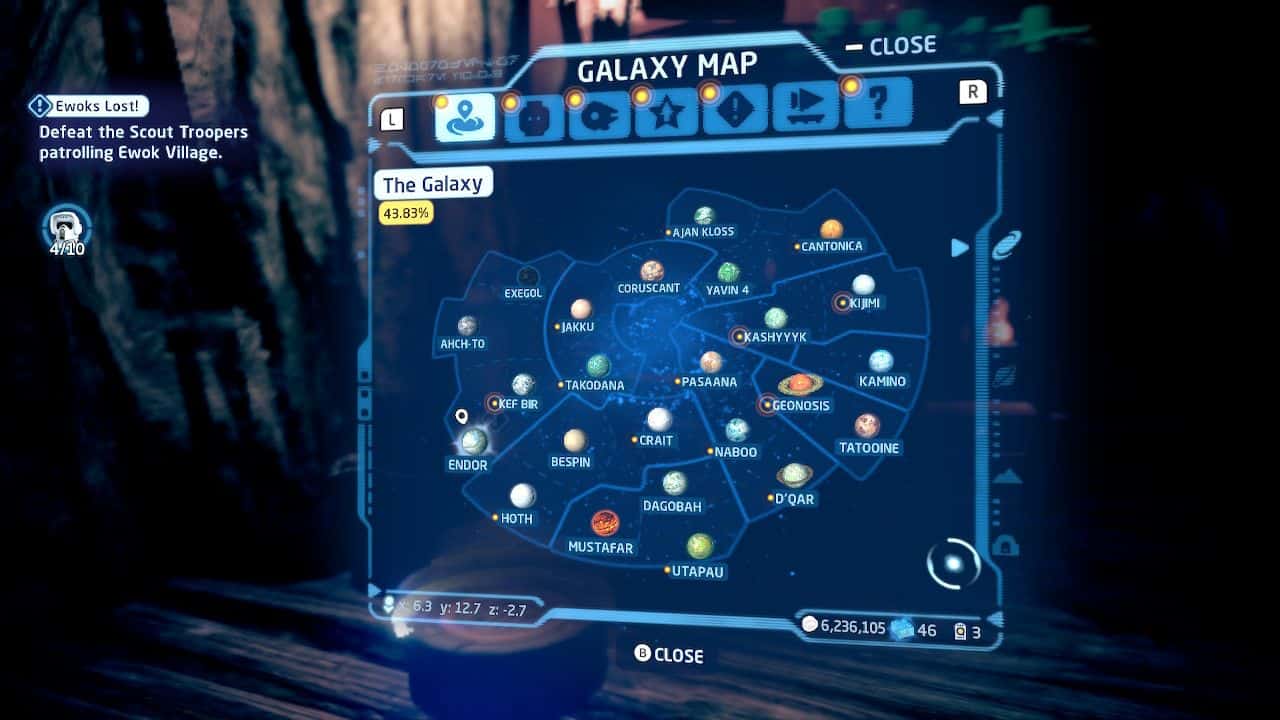
In LEGO Star Wars, there are now 24 planets that you can travel to, each with its own open area to run around. I personally like the visuals of Ahch-To; it is visually most similar to the film. However, there’s much less to do when you visit – besides sit in Luke’s house admiring his collection of blue milk, of course. Classic. And also, enough.
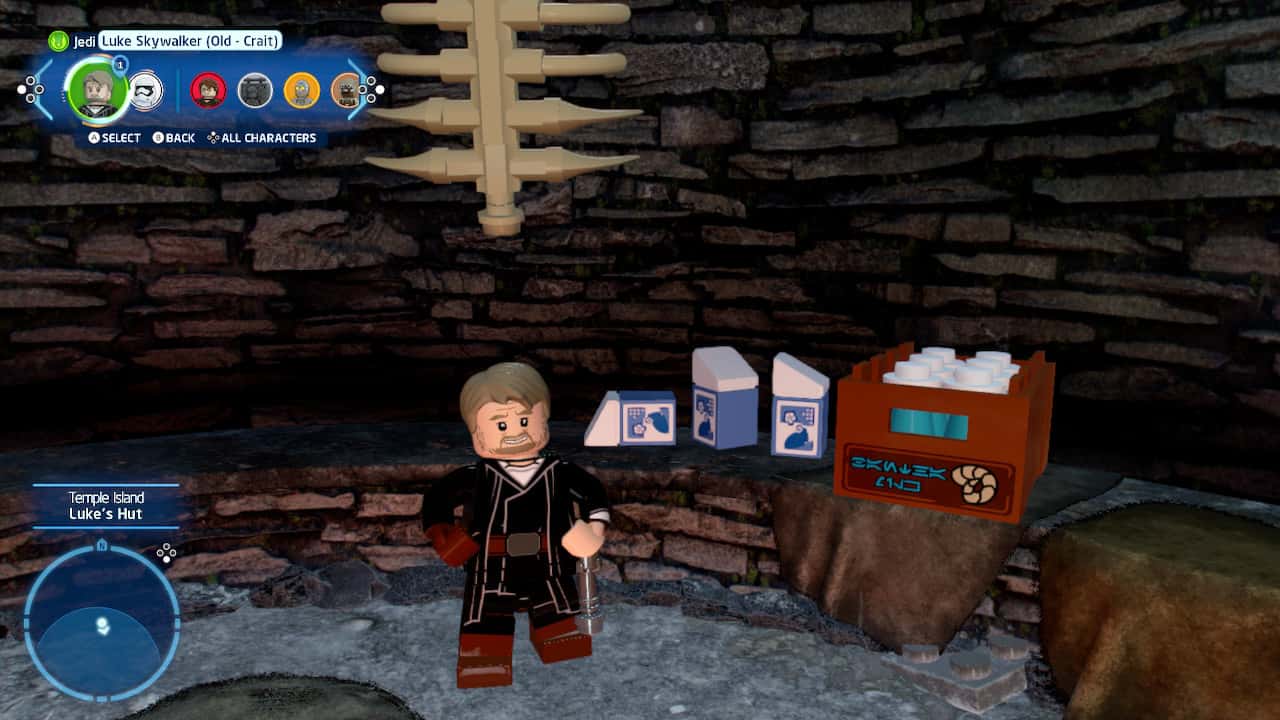
These are my three most notable planets to visit.
Tatooine
Did you ever want to go to Tosche Station and pick up some power converters? Visit the classic Mos Eisley Cantina? Tatooine has three sub-areas, making it one of the most giant planets to visit. You can see the Jundland Wastes and visit Luke’s home or Jabba’s palace; you can even visit the Sarlacc pit. When you start to explore the surrounding area, there is a lot to discover.
Mos Eisley is probably the best-known Tatooine destination. Again, there is much to uncover walking around, with Easter Eggs and nods to the Star Wars community scattered throughout. One mission I especially enjoyed is given by an investigating stormtrooper to try to settle the age-old question of whether Han or Greedo shot first.
Finally, the last location on Tatooine is Mos Espa. Mos Espa was the Home of Anakin and Shmi Skywalker and has recently featured in The Mandalorian and The Book of Boba. Look for a Datacard when you visit Anakin’s house and slip round the back.
Coruscant
This cityscape planet is home to the Jedi Temple and the center of the Republic and Senate – a key location in the Prequel trilogy. There are two areas to access: the Federal District and Uscru District.
You can travel between them with sky taxis (so long as no Jedi jumps onto and hijacks it for a high-speed chase). From the Jedi Temple in the Federal District, you can start collecting holocrons to unlock Jocasta Nu. You can also visit key locations like Padme’s home and Palpatine’s office. Here, you can even find a Portrait of Darth Sidious with his old Master Darth Plagueis.
Did you ever hear the Tragedy of Darth Plagueis the Wise?
The Uscru District is the seedy underbelly to the polished look of the city above. Although it may look a little grimier than the Federal District, it’s well worth visiting Dex’s Diner.
You could also have a go at the time trial based here – Uscru Drift. You have to try to get down the street in seven seconds. To do this, I recommend jumping on a droid bike nearby.
Yavin IV
Although technically the fourth moon of Yavin and therefore not a planet, it still makes my list. The temple here became a Rebel base, although it was previously constructed under Sith overlords years before.
The temple is the main structure you travel around on Yavin IV. It has multiple levels and plenty of characters to interact with, and secrets are dotted around this giant structure’s ruins. From here, you can start the quest to steal the Death Star plans, which is how you can unlock the Death Star capital ship.
This is also where you want to return once you have 100% completed the game to unlock a little secret.
Vehicles
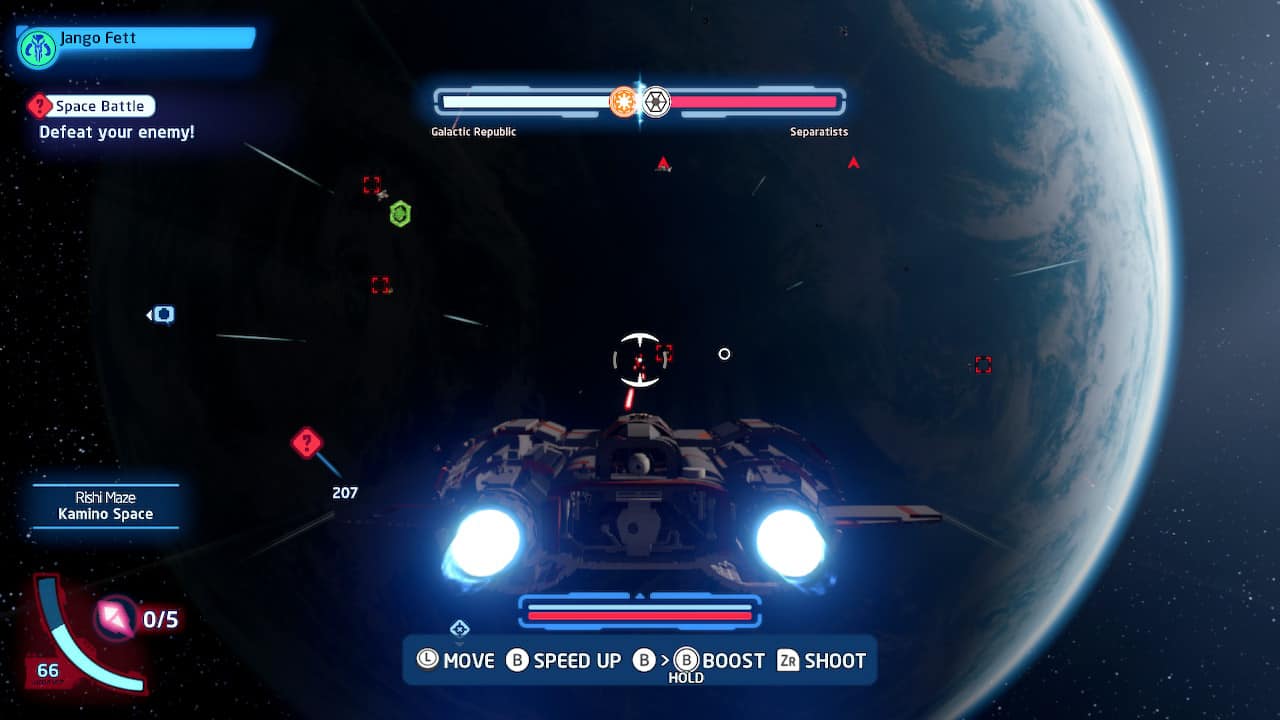
There are three different types of ships in LEGO Star Wars: The Skywalker Saga. Unlike in the original games, they feel more valuable. There are giant space battles to be a part of, and each planet has a Space section, too, with bits to explore and unlock. As such, it’s worth being on a ship you enjoy flying.
Starships
This is your most common type of ship – they are the basic ships that allow you to do anything you need. You can unlock these with the story or by completing side missions like character unlocks. These include the Millenium Falcon, TIE Fighters, and there is even a code to get the Razorcrest!
Capital Ships
These are the most difficult things to get in the game. Most require multiple steps to unlock and even then come with a hefty price tag. There are nine enormous vessels that you can use as a base. They work like portable levels.
After completing the necessary missions, these ships appear in space. You must seize them when they attack. You have to destroy the outer defenses and then complete the tasks required inside.
The cheapest is the Death Star II. You must have completed all story missions in Episode VI: Return of the Jedi to unlock it. Visit the Ewok village on Endor and complete the Doom Ball III quest. After this, you can purchase the Death Star II for 2,000,000 studs.
Although it might look half complete, I think you’ll find this battle station is quite operational.
Micro Ships
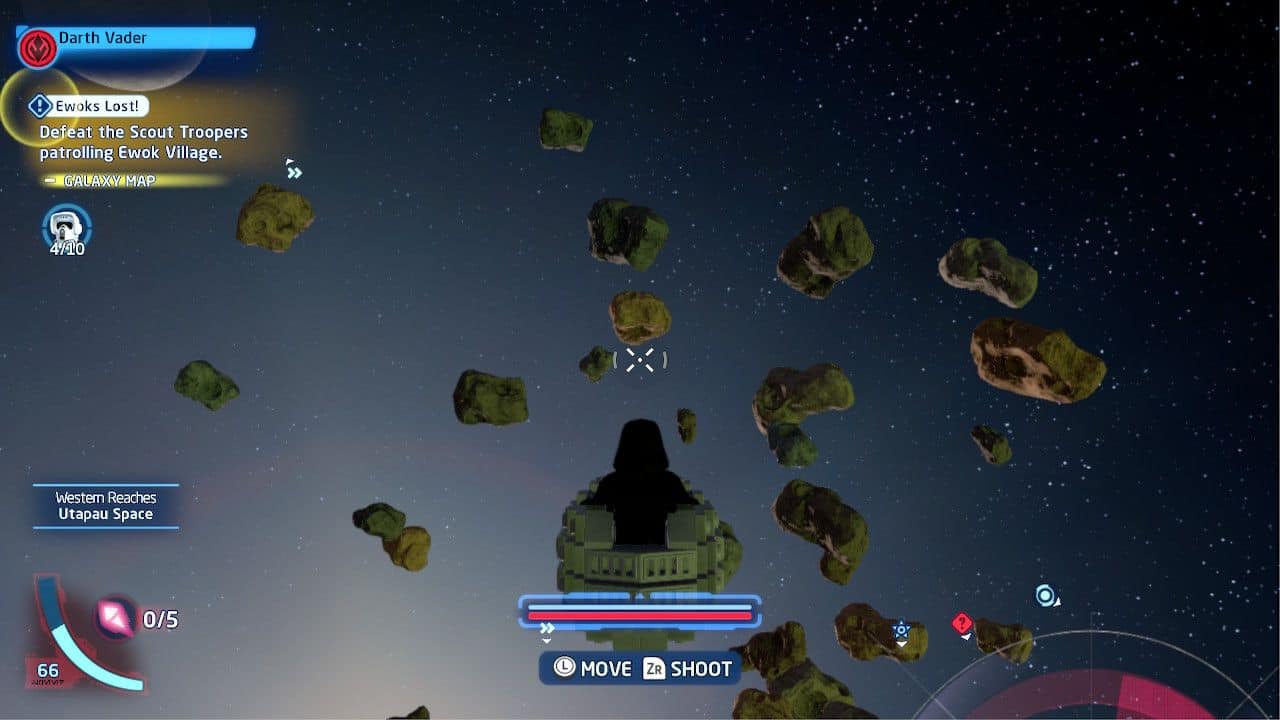
These miniature ships are earned by collecting five mini kits in each level. They function just like the starships, but your character sits on top of the small version of the ship.
There is something special and mildly amusing watching Darth Vader sitting on top of a mini Death Star destroying a fleet of X-Wing fighters. You can unlock the Death star by finding all the Minikits in Stay on Target.
Upgrades
These would be my top suggestions to progress through the game quicker and unlock all the characters you need. We managed to buy all of these just as we completed the main story.
The upgrades are split by category: Core Upgrades and class-specific Upgrades. The most important are the Core Upgrades. These affect all character types and require Kyber bricks and coins to unlock. Upgrades cost progressively more, so you had better finish those missions and solve as many puzzles as possible.
Financial Upgrades
Stud Magnets is the most essential Core Upgrade worth investing in early on.
I also found Hidden Bounties in the Bounty Hunter upgrades a nice little bonus. With this one, defeated enemies drop studs. At the first upgrade, you get 250; at the second, 500; and at the max upgrade, they drop 750 each. This soon adds up (especially with the Stud Multipliers – which are Extras, not Upgrades – on). For this to be effective, you just need to be a Bounty Hunter class.
To a lesser degree, the Counter Cash upgrade in the Core Upgrades does the same, but you have to counter an enemy attack to earn the studs. In normal combat, this isn’t really necessary.
By getting these early along with Stud Multipliers, you won’t have to grind those same levels repeatedly just to afford to buy your favorite characters, ships, or upgrades.
Other upgrades in the same vein are Hero Terminal Expert (Hero Class), Villain Terminal Expert (Villain Class), and Astromech Socket Expert (Astromech Class). These all grant studs on completed terminals (the little puzzles that unlock doors in levels and the open world). With the upgrade at Level 3, you get 7,500 studs (!) on each completion. However, they’re costly; each Level 3 will cost you 85,000 studs and 24 Kyber bricks.
Time-Saving Upgrades
I found that a vital Core Upgrade for time-saving is Speedy Sprint. The amount of running you do around the overworld might start to drag. Some puzzles and quests have you running backward and forward. With this, you can at least do it 40% quicker.
After you have finished the first few levels, you may want to purchase the Collectable Detector in the Core Upgrades. It’s worth upgrading to Level 3 to find those super-rare Datacards. Without these, you can’t buy the above bonuses that result in studs flooding in.
You might like to invest in the Business Opportunist Scoundrel Upgrade. It allows you to purchase hints and rumors at a considerable discount. I recommend getting this one later. It’ll help as you go back through to get the harder-to-find collectibles.
Episodes
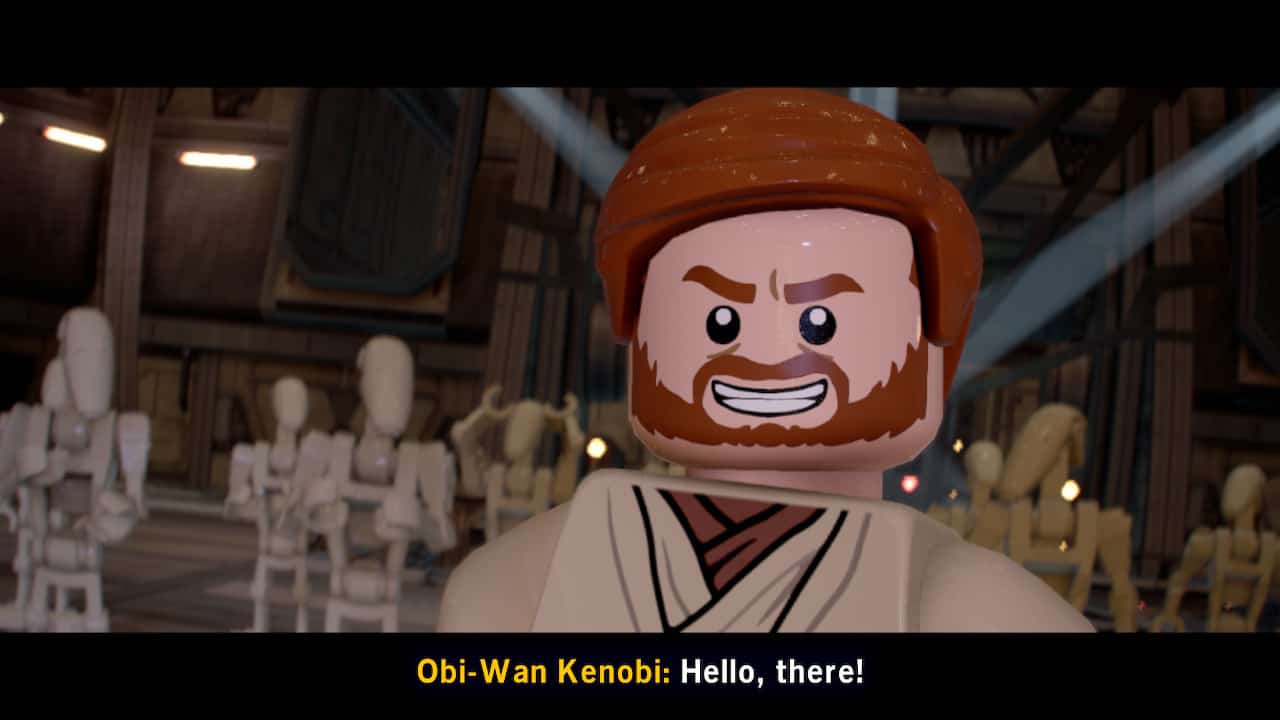
In this game, you’ll play through all nine episodes of The Skywalker Saga.
Each episode has five levels. It’s completely redone from The Complete Saga, so expect something new – but with hints to what once was.
Allocate about 20 minutes for each level before you start playing. As always, you’ll need to go back on Free Play to fully complete each one.
Extras
Now, onto the unlockable Extras. Have you ever wanted your own Porg companion to join you in battle? Or maybe to fight with a baguette instead of a lightsaber? Well, now you can.
Unlock Extras with studs and Datacards, the most valuable currency in the game. They’re hard to find – consider using the Collectable Detector Upgrade.
I recommend purchasing the Stud Multipliers first – at least the x2 and x4 Multipliers. Studs x2 costs 1,000,000 and one Datacard, so it takes a little saving. However, Studs x4 costs only 2,000,000 and one Datacard, so it should take the same amount of time to get your coins together. These make collecting True Jedi and purchasing characters exponentially easier.
Another helpful Extra to purchase is the Universal Translator upgrade. This allows you to talk to any character without swapping to a protocol droid. After playing for a while, you will notice how often you have to switch characters. It eats into your time. This Extra is only 500,000 Studs and one Datacard and, in my opinion, is well worth it.
Finding Datacards for Purchasing Extras
Datacards are harder to come across – even if you have the Collectable Detector at Level 3. There are so many items to find that it’s hard to know which ones contribute to the Datacard – there isn’t a filter option.
If you’re playing chronologically, like I did, I recommend getting the one on Coruscant in the Federal District. This is a good way to get started. You can do this after Episode 1: The Phantom Menace, and it only requires a Jedi, which should have been unlocked. If you go West from the landing platform in the Federal District, you should come across two locked doors. When you get there, you should be able to get down underneath and behind the building. Follow the path to two buttons. Stand on one and use the Force to move a box onto the other. “Hey presto!” as they say. You have collected a Datacard. The coordinates should be -47.7, -0.3, 50.6. You can check by pausing the game and looking in the bottom left corner of the Menu.
LEGO games have always included wacky and fun elements. If you have the Datacards to spare (there are 19 in total), purchase some of the more fun Extras. You can turn your characters into holograms with Hologram Mode or, even better, turn all Civilians into GNK droids – “GONK!” These are generally cheaper than the Stud Multipliers but less practical than others. Still, they can make your playing experience a lot more fun!
My favorite Extra (although all of them are gold) is Pew Pew. It changes all blaster sound effects to voice recordings. Run around and play LEGO Star Wars just like you did as a child with your LEGO sets. It’s closely followed by Cantina Music, which plays the Mos Eisley Cantina theme on repeat. Be warned; this will be stuck in your head for the next month.
Weapons
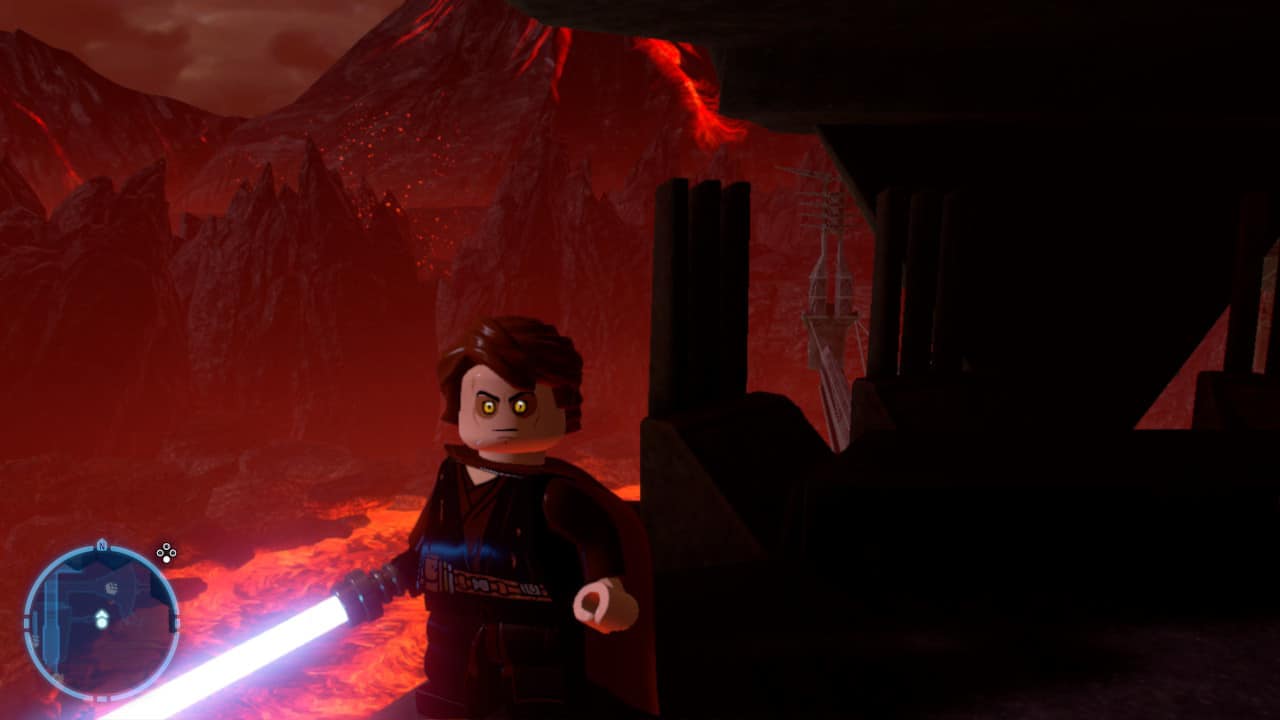
If you have watched Star Wars, there are a variety of weapons available, from the lightsaber to the Gaffi Stick wielded by Tusken Raiders. This is no different in LEGO Star Wars.
In contrast to the previous LEGO Star Wars games, every character can now attack (including droids).
Jedi and Sith have lightsabers of various styles and colors – Rey (Sith) even has that FANCY double-bladed lightsaber thing. Chewy has his Bowcaster. Use the in-game Upgrades to increase the power.
Grenades, thrown by the villain class, are also a great addition. They’re a great way to start if you want to destroy a room quickly. Lob them all around to find where the studs and build opportunities are.
Bounty Hunters have Rapid Fire Weapons, used to destroy the gold objects around the map.
However, having said all this, blasters now have an advantage, in my opinion. It is usually an instant kill if you hit a character in the head. If they’re wearing a helmet, your first shot knocks it off, but the second hit will kill them. Overall, this makes blasters very powerful, including at long range.
This isn’t the case for Bosses, as that would be a brief and boring battle.
Alternatives
LEGO Star Wars: The Complete Saga
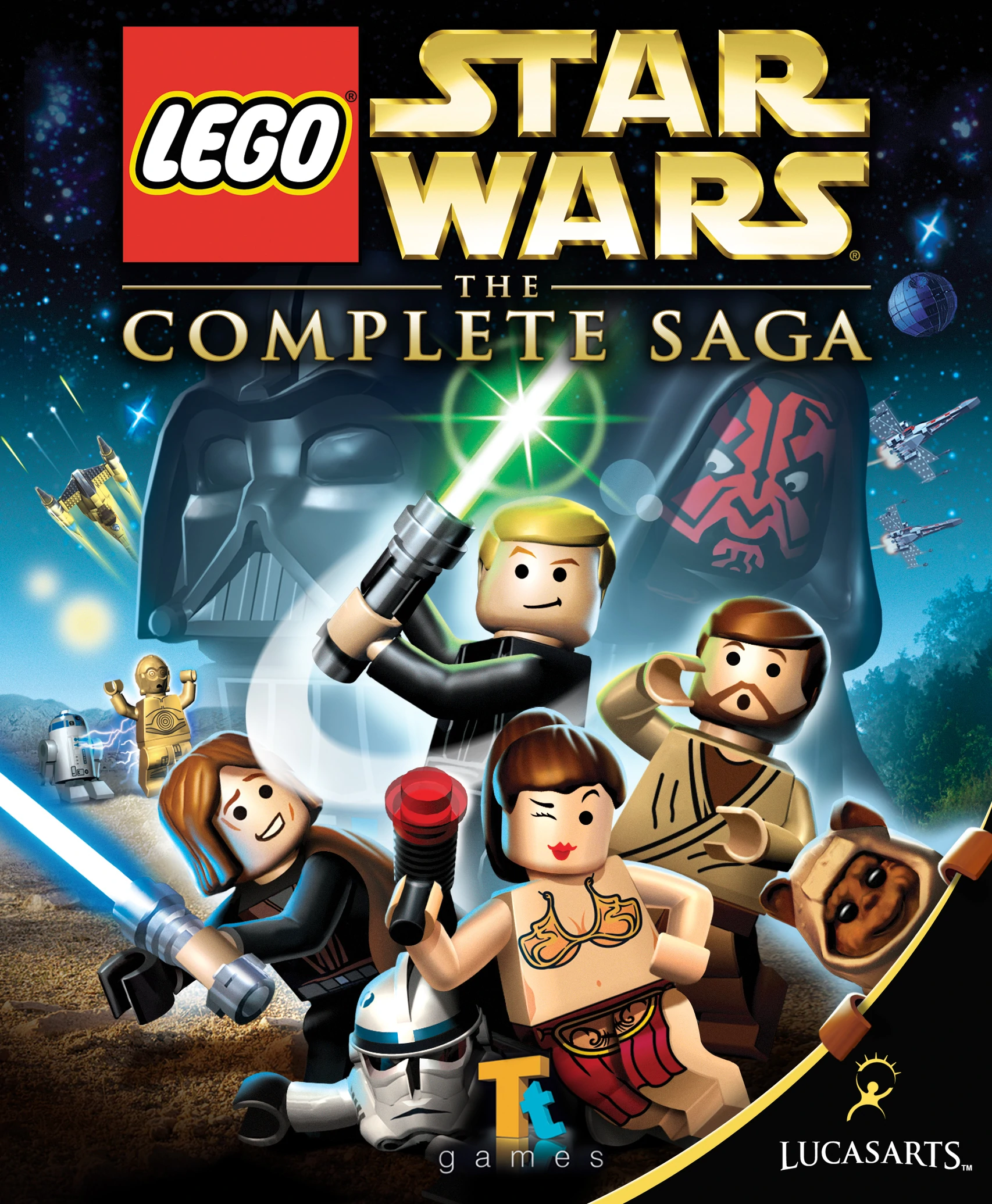
I still feel that The Complete Saga is the best LEGO game TT has ever come out with. The Skywalker Saga comes oh-so close, and it’s a brilliant game in its own right. However, I can’t help but feel that The Complete Saga has a clear and obvious identity. It’s not trying to be overcomplicated or too flashy. Those things aren’t necessarily bad, of course, but they’re part of what makes a LEGO game a LEGO game.
With The Complete Saga, you still get your fix of LEGO and Star Wars. You still get to experience the goofiness and pure joy that define a LEGO game. But it’s all more simple (in a good way).
I’d argue that, if The Skywalker Saga isn’t for you or you’re looking for something similar, you can’t beat the classic. Well, the combination of the two classics, I suppose. You can find used copies for quite literally $2 or $3.
LEGO Lord of the Rings
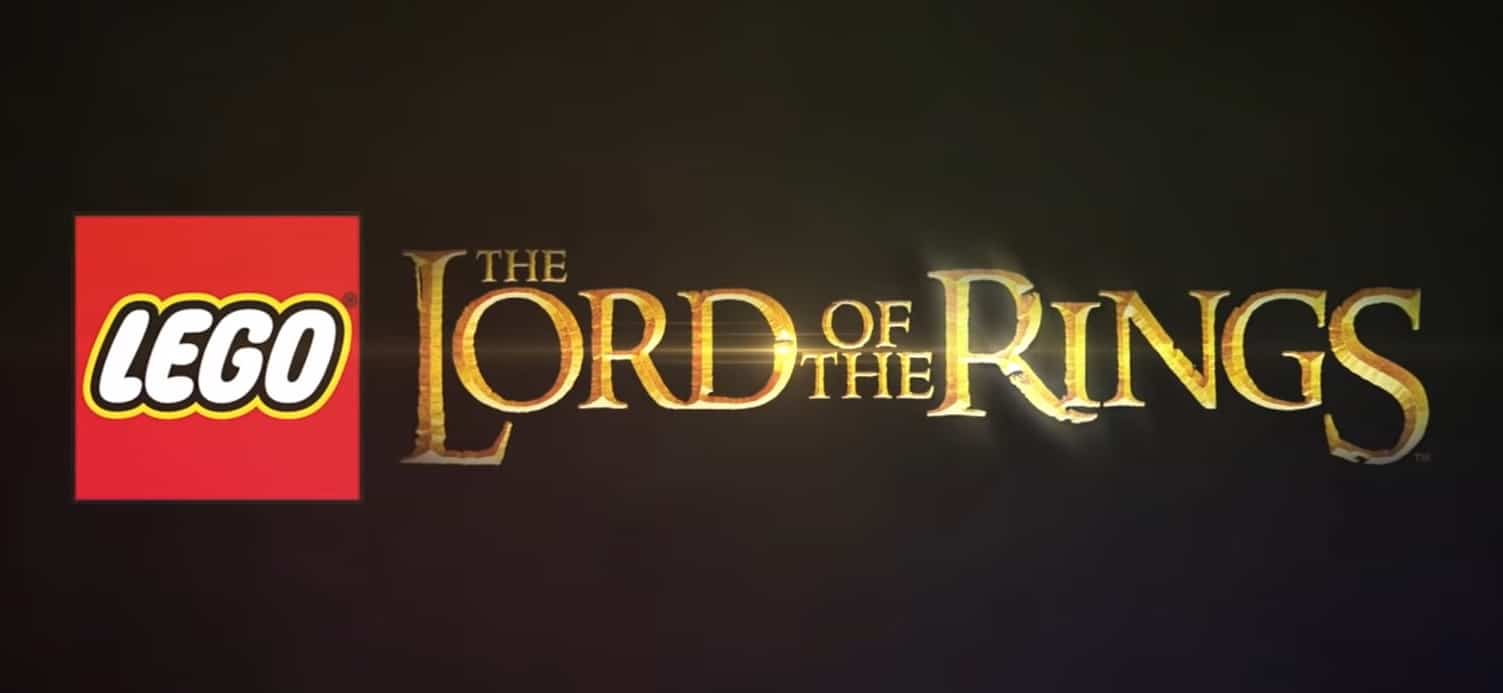
LEGO Lord of the Rings is another highly-rated open-world LEGO game. Follow the Fellowship on their mission to destroy the ring. As usual, you get the slapstick humor, collectible hunting, and coin gathering. LEGO Lord of the Rings came out in 2012, making it quite old now (although newer than The Complete Saga).
If you’re looking for an open-world LEGO game, this is a great place to start. I’ve enjoyed playing it, although it might not mean much to you if you aren’t familiar with J. R. R. Tolkien’s Middle Earth. It’s a great example of creating an open-world game but maintaining that LEGO identity a little better than The Skywalker Saga managed (in my opinion).
Star Wars: Jedi Fallen Order
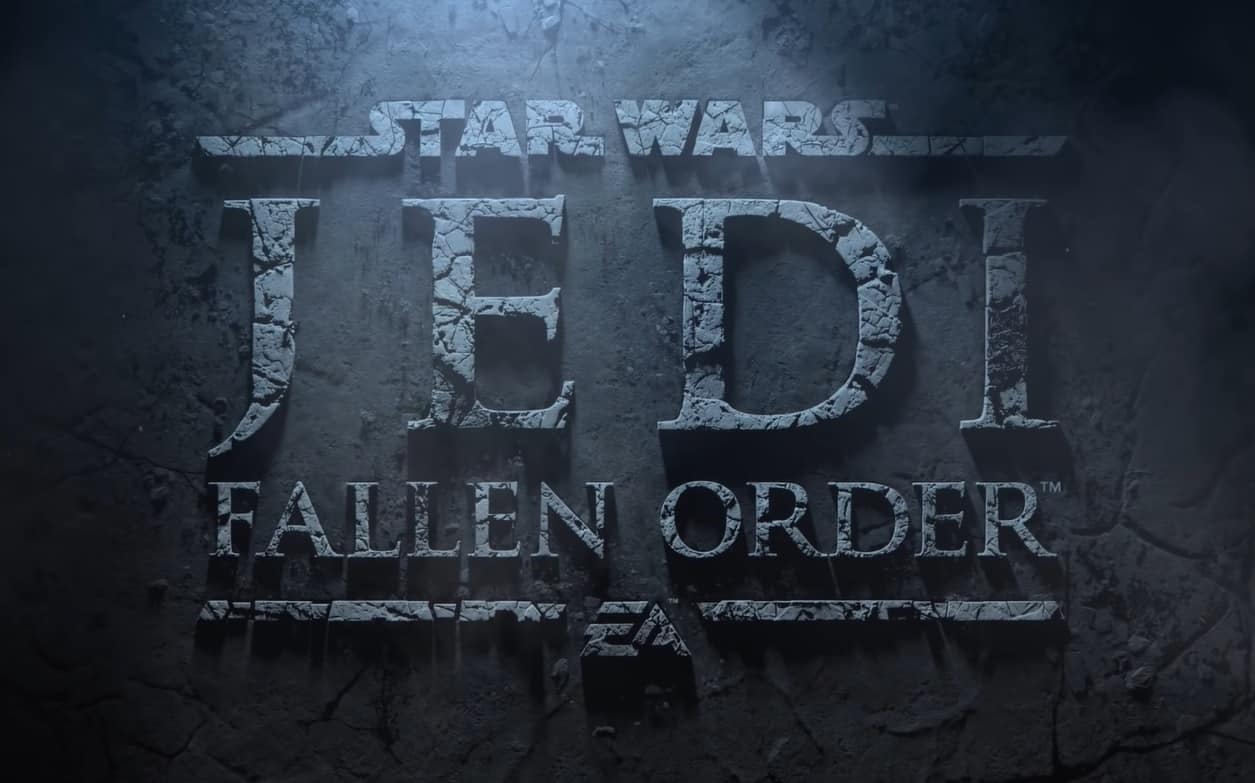
Fallen Order was a brilliant game. It came out towards the end of 2019 and follows the life in exile of Cal Kestis, former Jedi Padawan. After his master was betrayed by the clones and killed defending him, Cal hides on Bracca. Eventually, the Sith Inquisitors come looking, and he’s only saved by a couple of mercenaries who need him to open a vault. The rest of the game follows his story as he learns to accept the past and look to the future without fear.
Along the way, you’ll explore huge maps across five planets. There are hundreds of collectibles to find, including chests, Force echoes, and seeds for your terrarium.
I’ve chosen to list this as an alternative because it’s an open-world Star Wars game. It’s all about exploration and finding your way around. LEGO Star Wars: The Skywalker Saga is similar in its large maps and endless collectibles. For me, they’re both a bit much. I love the story (and Free Play on LEGO Star Wars) but it takes so much time to find all the collectibles, I get fed up.
Frequently Asked Questions
Question: How long does it take to play through LEGO Star Wars: The Skywalker Saga?
Answer: If you’re playing through on Story Mode, I’d allow about 1.5 to 2 hours per episode. There are nine episodes. It took us around 15 or 16 hours to complete the story the first time around. Since then, we’ve spent another few hours working on minikits and other collectibles. I’d guess it’s going to take between 40 and 50 hours, in total, to collect everything.
Question: Is LEGO Star Wars: The Skywalker Saga the same as The Complete Saga?
Answer: No. LEGO Star Wars: The Skywalker Saga and LEGO Star Wars: The Complete Saga are different games. The Complete Saga came out in 2007. It goes through the first six episodes in the traditional single-perspective LEGO format. LEGO Star Wars: The Skywalker Saga came out in 2022. It’s a completely rebuilt and re-engineered game. It goes through the now-nine Star Wars episodes and includes downloadable content from the series.
I also miss the red bricks and unlocking the subsequent silly bits. You can still add codes if you’re a dirty cheat – but The Skywalker Saga doesn’t quite hold the same spirit as The Complete Saga.
In my opinion, The Complete Saga still holds the title of being my favorite LEGO Star Wars game. But only just. The Skywalker Saga almost matches it. Most wouldn’t agree with me, but there we are. I played through The Complete Saga (in its entirety) last year, so it’s not just nostalgia glasses for me. They’re both great fun, regardless!
Question: Is LEGO Star Wars: The Skywalker Saga open world?
Answer: LEGO Star Wars: The Skywalker Saga is set in an open world. As a game, it’s incredibly ambitious, but TT has pulled it off. You can visit any of 24 planets (yep!), never mind engaging in space battles. The storyline requires a certain amount of running around the galaxy, but you’ll soon get used to it.
Looking for more interesting readings? Check out:

